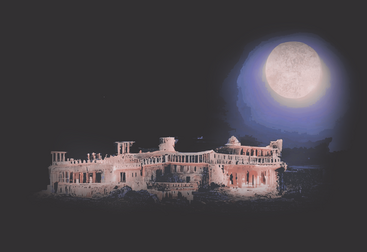
VANAHEIM
steady course to the haven
Landmarks & Locations

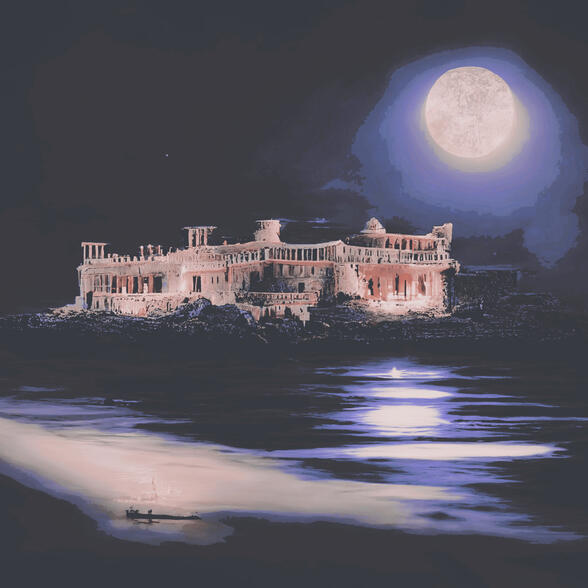
hhhhhhhhhhhhhhhhhhhhhN ó a t ú n
Njord's palace by the sea and site of the surrender of Vanaheim to Odin. This was the palace of Njord's construction and design. On a rocky outcrop beside the water its towering stone walls gleam like a pearl in the daylight and serve as a beacon to those traveling by night. With a royal courtyard facing the sea it was built to be both beautiful and to keep its occupants cool. Large windows allow in the ocean breeze and bring an end to stifling heat.
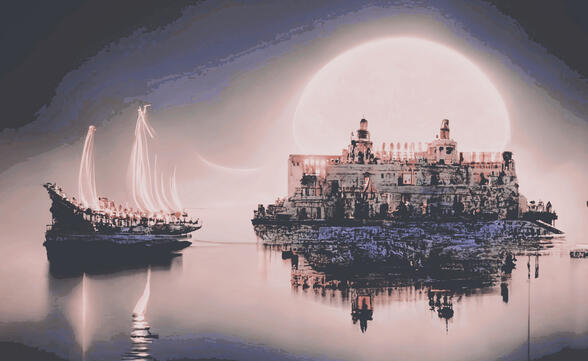
hhhhhhhhhhhhhhhhhhhhhhhB ú ð i r
Buri's palace, in the center of Vanaheim, surrounded by towering trees and perched upon a hill like a fat heron brooding over its nest, now used as a winter palace for when the seas become too rough to live beside. The first winter Njord and his wife returned the queen remarked upon how she missed the sea each night. In a feat of engineering, Njord had a lake, large enough to sail a boat upon, built for her around the palace. Though it was not his capital or legacy it stood as a testament to his love for his first wife.

hhhhhhhhhhhhhhhhhhhhS p a k r h a l l a
The library of the capital. Unlike the libraries in lesser cities the 'hall of knowledge' is accessible only to the most esteemed of scholars, their students, and certain members of the nobility. This was the library that house knowledge not only from Vanaheim but from across the realms. The ancient histories of Midgard, tomes on the metalworking techniques of the dwarves, and natural healing of the elves were all housed within its towering shelves. With the fall of Asgard, any books pilfered from the scholars who tended to it were lost to eternity.
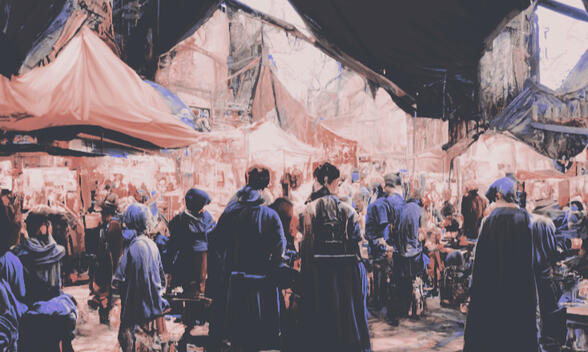
hhhhhhhhhhhhhhhhhhhhhhS a n d v i k
Once a small settlement for the builders and families who worked on Nóatún, the small group of homes soon became a bustling city. Due to its position near the water, it became a hotspot for trade and selling goods from across the realm. Here is where the most important of libraries is housed, where the most impressive houses of the arts can be found, and the sprawling villas and manners of courtiers dot the shoreline.

hhhhhhhhhhhhThe M o u s e i o n of S a n d v i k
The school and home of arts and music in the capital. It is here that the realm's most renowned musicians, poets, and artists learn their trade
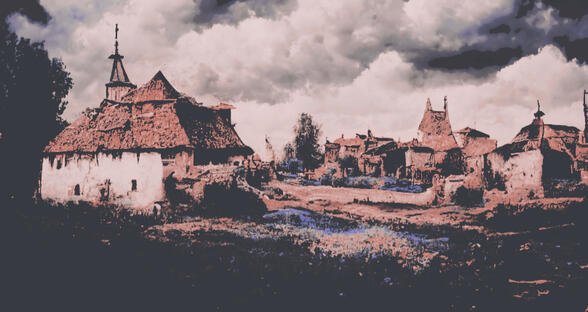
hhhhhhhhhhhhhhhhhhhhhhK a l l e k o t
A small village close to Sandvick started to house Aesir soldiers and their families who would remain after Odin left Vanaheim. In the years since then it has become an Aesir stronghold in the realm and mirrors the former realm a great deal from food to architecture to clothing. For many years it went without the oversight of a jarl until the titles and manor that came along with it were granted to Sigyn's daughter & son-in-law as wedding gifts.

Fashion & Clothing

Women's clothing, as with all clothing in the realms, is largely a product of both the climate and the sort of lives they live. Everyday, or more common women's clothing is usually made of home-spun linens, either in shades of white or blue ( as blue is the cheapest and most abundant dye for textiles ) and sometimes browns.In general, a woman's outfit would contain a dress, sometimes belted at the waist or with a sash around the waist, an underdress ( especially in the colder months ), sandals or boots, a wrap ( in the style of a palla to be wrapped around the shoulders or worn as a shrug about the arms ) and for married women a veil.
Over the centuries, the styles and fabrics noble women ( and to some degree common women ) changed as both the political climate changed. In the times when Freyja was young and Crown Princess, lighter, thinner fabrics with dramatic cuts and colors were favored. While not immodest the ideas of nudity being inherently sexual was not quite so pervasive. So diaphanous gowns were quite common, especially in costal towns and in Njord's court.At that time, it was Freyja's fashion who everyone followed and along with these soft fabrics she favored bold colors ( though prints remained uncommon. )
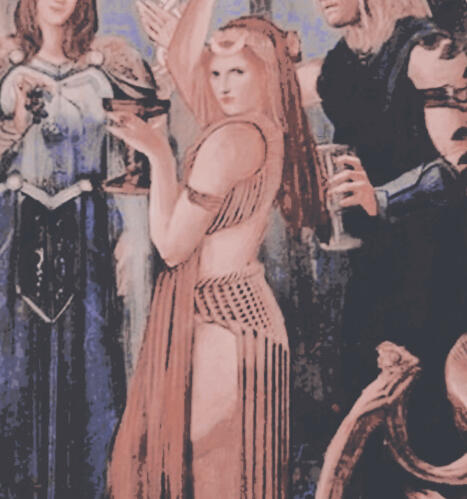
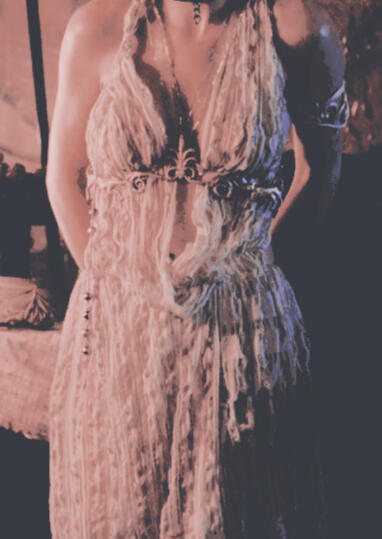
During Odin's occupation of Vanaheim, just like Freyja's reputation, the idea of Vanir fashion became exaggerated. They were depicted as barely dressed, or in dresses that were cut in quite unrealistic and truly ineffective ways. They were seen as opulent and sexually indiscriminate, a people more focused on their own pleasure. This was seen as their downfall. The women especially had blame laid upon them. The only exception seemed to be Frigga who had adopted Aesir ways.
Because of this idea there came a shift with Sigyn's reign, as this is the depiction of her people she had been forced to see for many many years. Just as her mother had been the guide for what was seen as fashionable centuries prior, this new queen became seen as the height of fashion. What she wore would often ripple through the nobility. Her dress was slightly more conservative, but it also carried with it a political message.
While the silhouettes remained largely the same, the fabric became thicker. While still not so heavy as wool or Aesir fabrics the weaves became tighter, showing off less of a woman's body than it previously had. And where her mother had once favored bold colors, Sigyn's wardrobe became more muted in public. A sign to both the common folk and the nobility that she would not waste money on expensive dyes and lavish clothing.And as she wished, during the worst parts of restoration, her more frugal sense of fashion was quickly adopted.
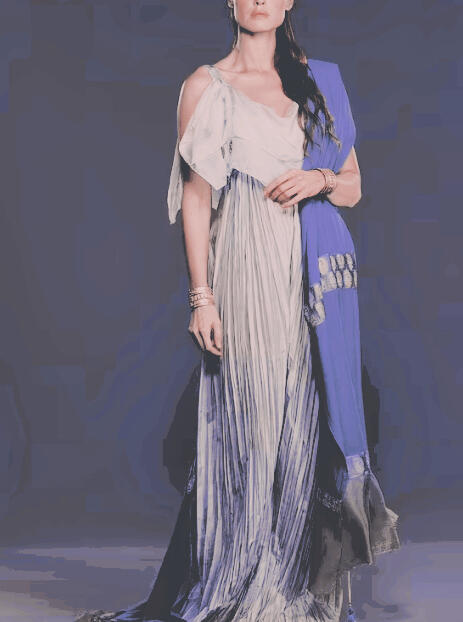
Over the years that followed, while the more conservative weaves, cuts and silhouettes remained, color once more started to return to the wardrobe of the nobility. ( Though blues and paler colors remained in fashion over the deep, rich colors of centuries prior. )Some aspects of Vanir fashion never changed with the political upheaval, however. A woman's beauty had always been based upon the length and beauty of her hair, with long hair that fell below the waist being the most popular length. While Sigyn frequently cuts her hair to just below her chin, this was never adopted. Once more like their Midgardian counterparts certain hairstyles were reserved for married women. Intricate braids and updo's were reserved for women who had already been married, while unmarried women wore their hair unbound and uncovered.
Along with updo's married women of all classes often wore veils, pinned at the back of the head regardless of the hairstyle beneath. ( But especially if their hair was worn down. ) Women of means often wore incredibly long ones that had to be draped over the arm to keep them from dragging on the ground.The queen, of course, is the exception to the rule.
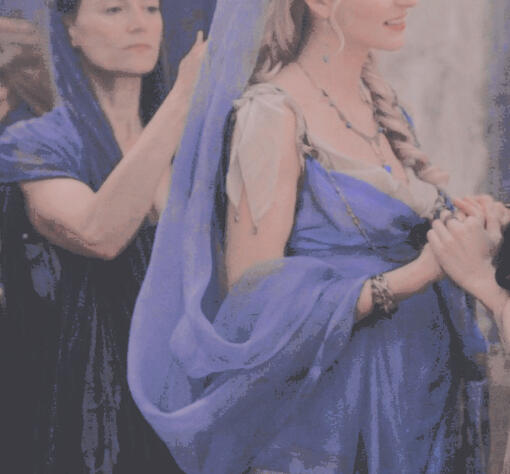
Jewelry also, rarely changed. While precious stones were still worn, pearls were always more fashionable. Whether it be in rings, earrings, bracelets, necklaces or even in their hair, Vanir women wore them with great frequency. The style of jewelry was often delicate, with things like large bracelets or heavy necklaces being something more for men.When it comes to makeup, a fresher face has also been in fashion for many centuries. Lips might be tinted, sometimes pearls crushed to sweep across the eyelids, and the faintest of blush dusted across their cheeks, makeup has never been a huge part of the everyday look of women.Men's clothing remained largely unchanged over time. Regardless of class or status the men's clothing is usually comprised of a tunic and pants with boots, or in costal regions, sandals. The colors of these fabrics usually mirrors whatever is fashionable in women's clothing at the time.
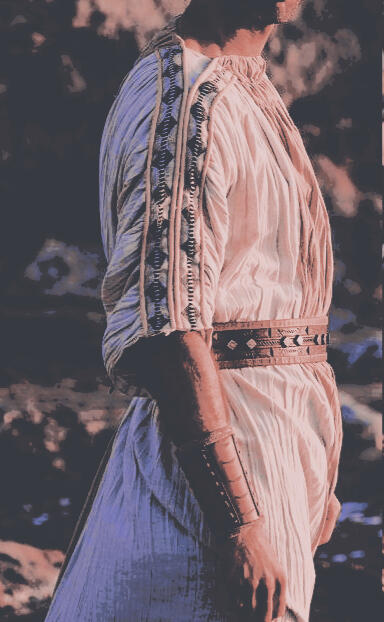
The means in which men show their wealth, at least with their clothing, is usually through embroidery done on the tunics, large belts, bracelets and rings.The one trend across all of the nobility is furs. As a warmer realm the need for fur cloaks or gloves outside the coldest days of winter or chilliest of nights is rare. And so, the ability to own furs which might be worn infrequently has become a show of wealth, disposable wealth at that.
